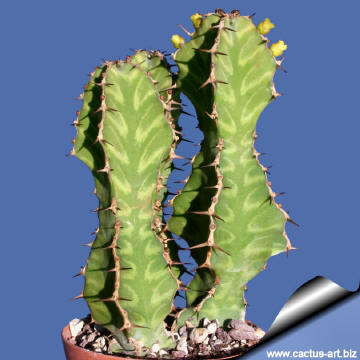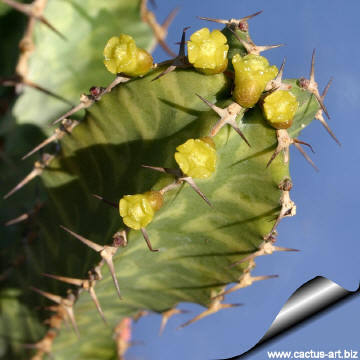-
x
Descrizione
Questa è una delle piu popolari euforbie colonnari con fusti ornati da attraenti disegni a "V". Col tempo ramifica formando strutture a candelabro. Accepted scientific name: Euphorbia pseudocactus Berger Origin: Natal, subtropical coast of South Africa Habitat: Thorny bush-lands and savannah often forming colonies. Conservation status: Listed in CITES appendix 2.
| |
| Description: Multi-branched, dwarf-stemmed, candelabra shaped succulent, 60-120 cm tall that, as its name suggests, resembles a cactus. The stems often have distinctive yellow V-shaped markings. Plants eventually form large mounded clumps. This is a highly variable species with several forms and hybrids making precise descriptions of it difficult. Among them:
| |
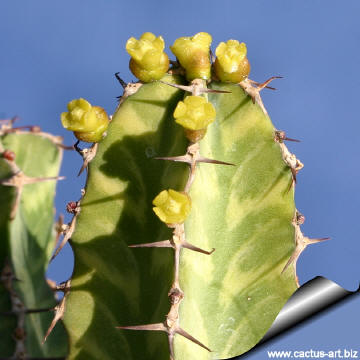 | |
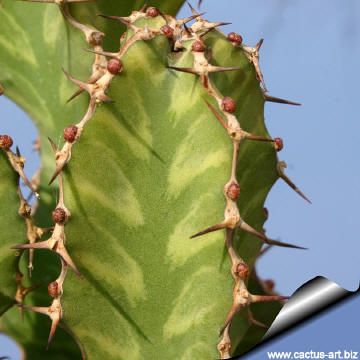 | |
| Cultivation: It is an easy species to grow that is suited for any well drained soil in full sun. But young plant are happy growing indoors, where they can easily reach the ceiling. Give the plant an airy growing medium which mainly consists of non organic material such us clay, pumice, lava grit, and only a little peat or leaf-mould. Water regularly during the active growing season from March to September. No water should ever be allowed to stand around the roots. Keep almost completely dry in winter. It is a moderately fast grower, and will quickly become large landscape masterpieces in just 3-5 years. Only downside is from strong winds, the columns often smash into each other, causing permanent scarring... best to plant in such a location where winds are not a big issue. If plant becomes very red, this is a sign that the roots have not developed properly. It is a relatively fast growing and long lived plant and once established, it will be content in its position and with its soil for years. It can tolerate moderate shade, and a plant that has been growing in shade should be slowly hardened off before placing it in full sun as the plant will be severely scorched if moved too suddenly from shade into sun. Like quite small pots, repott in very later winter, early spring. Can be pruned for shape and branching. Frost tender, frost free zones only. Plant Pests: Prone to mealy bugs and rarely scale. Propagation: It is easy to propagate by cuttings in late spring to summer, just take a cutting of the plant let it dry for 1 or 2 weeks and stuff it in the ground (preferably dry, loose, extremely well draining soil). Warning: All Euphorbias contain a white sap that can be irritating to eyes and mucous membranes. If contact is made with this white sap, take care to not touch face or eyes before washing hands with soap and water. | |

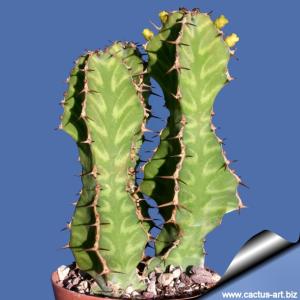
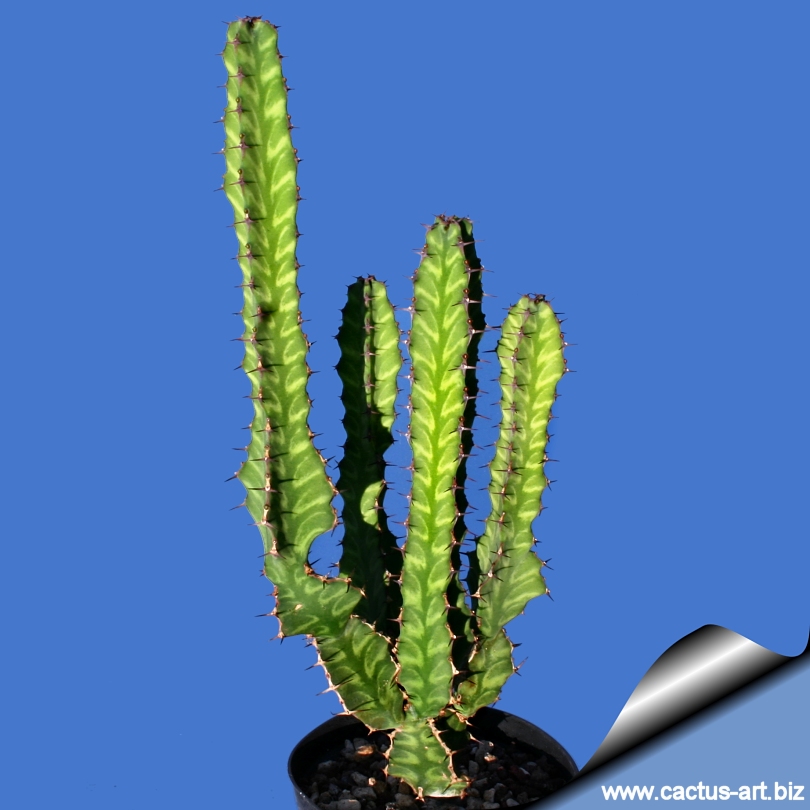 Euphorbia pseudocactus
Euphorbia pseudocactus 